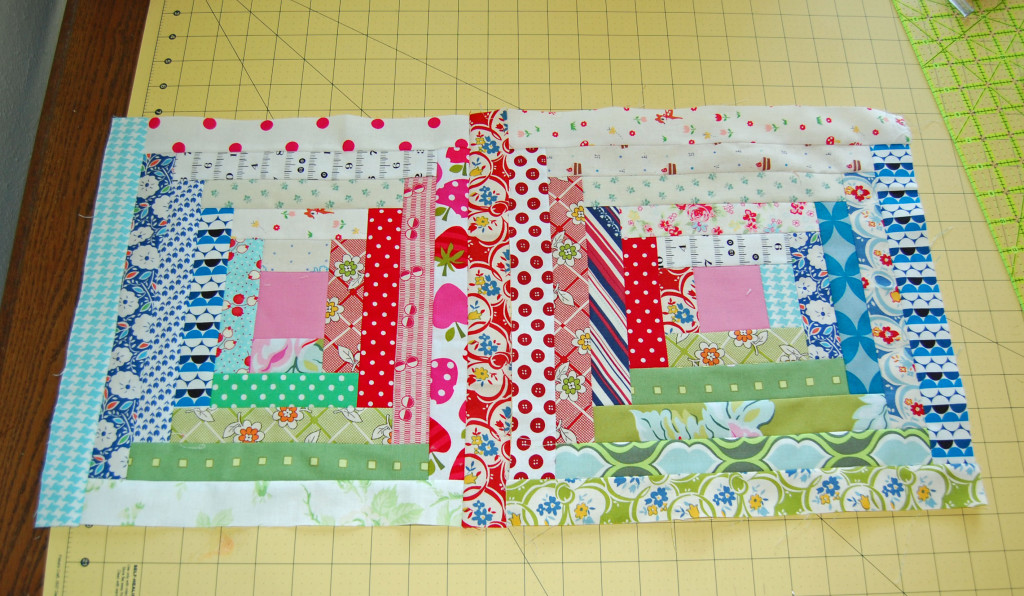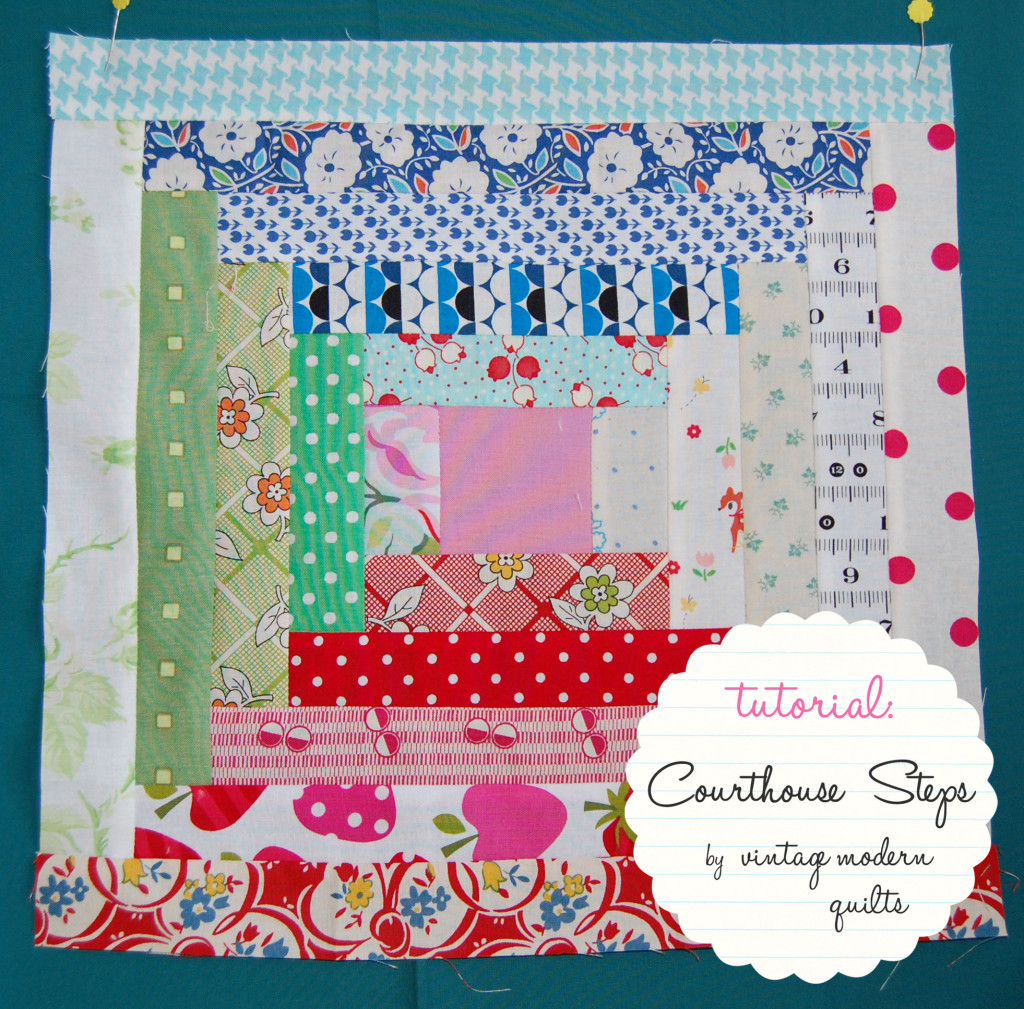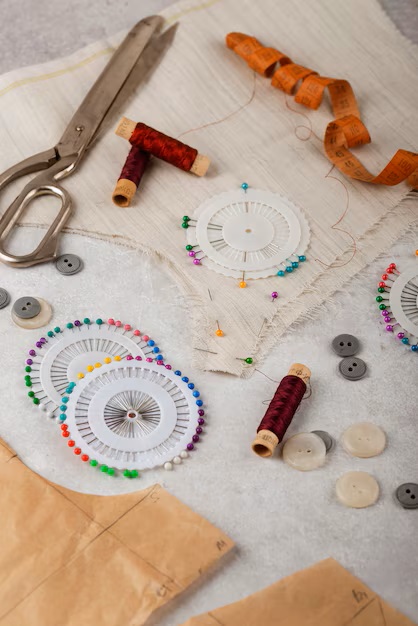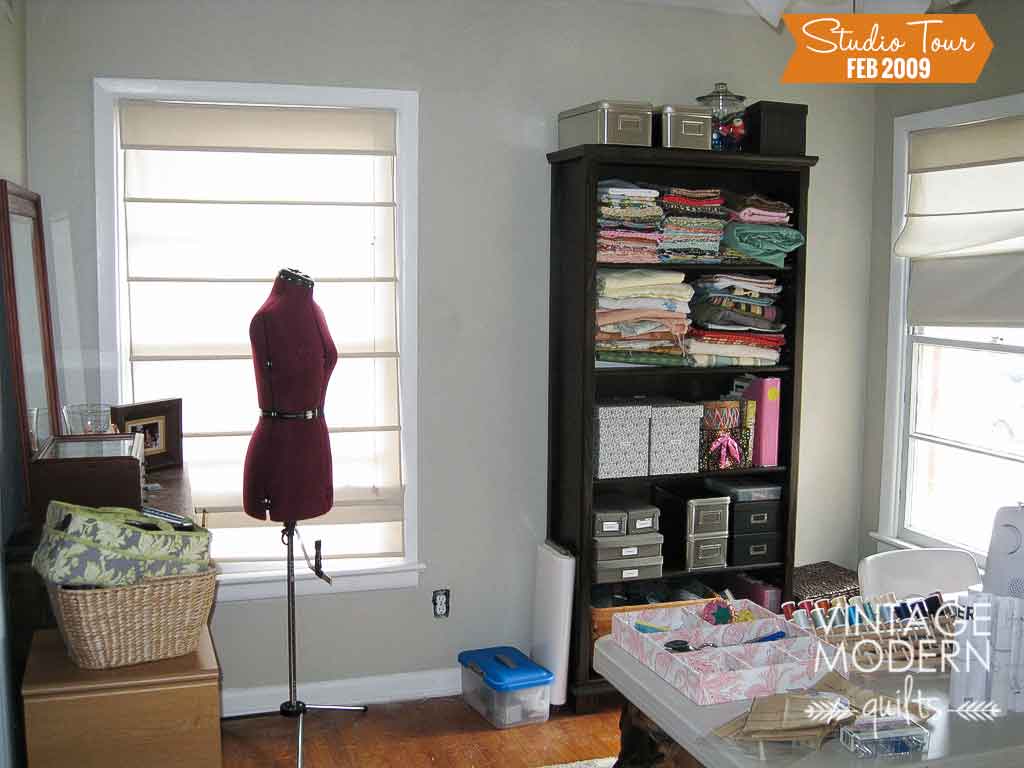Courthouse Steps
The Courthouse Steps block is a variation of a log cabin block. It traditionally has red center squares and a variety of light and dark fabrics that give you a chessboard effect on your finished quilt top (example here). This is the block I’ve chosen for my turn in the Twice Around the Block Bee. This tutorial is mainly a how-to for my bee members but will be useful for anyone else who wants to try this block. I’ve chosen fabrics in four colors (red, green, blue, and white) for a Christmas-y quilt.
To make one block like my sample block, you will need:
5 green strips, measuring 1 1/2″ wide by varying lengths (the longest strip you will need is 12.5″)
5 white strips, measuring 1 1/2″ wide by varying lengths
5 red strips, measuring 1 1/2″ wide by varying lengths
5 blue strips, measuring 1 1/2″ wide by varying lengths
1 pink center square, measuring 2 1/2″ square
*A note about cutting*
This block is very scrap friendly. Scraps will need to be at least 1 1/2″ wide. I used fat quarters for my fabrics and was able to get 12 strips from each. I highly recommend using a Shape Cutter from June Tailor to cut your strips. It is fast and makes the cuts more accurate. (fabric needs for an entire quilt are given at the end of this post)
Piecing the Block
Take your center square and choose two strips in different colors. One strip gets sewn to the top of the block; the other strip gets sewn on the opposite side. I’ve chosen red and white strips in the example below.
Press your seams to one side (I pressed all of mine away from the center square) and trim the excess fabric. You can be a lazy quilter like me and trip the edges carefully scissors at your machine:
or you can trim them with your rotary cutter:
I used both methods for my blocks and they all came out to 12.5″ in the end. Do whichever method works for you. Add your next two color strips on the opposite sides of the block. After a few rows you will have something that looks like this:
Continue to add strips to each side until you have a total of 5 strips in each color. This is what your finished block will look like:
When you put two blocks together, you can see the secondary pattern start to emerge:

Pretty, huh? The cutting part is tedious, but the piecing is fast and easy and the finished look is definitely worth the time. I hope you all try it! And I hope my bee members enjoy making these.
*For a 96″ x 96″ quilt, you will need to make 64 blocks. Fabric requirements are 22 dark fat quarters, 19 light fat quarters, and 3/8 yard of your center square fabric.





